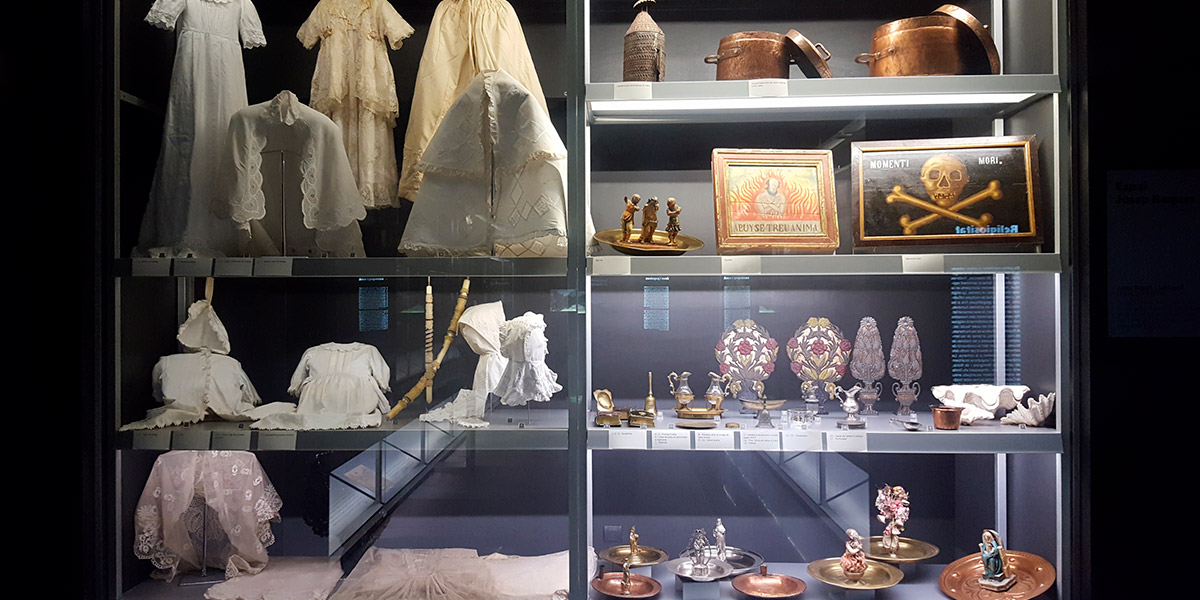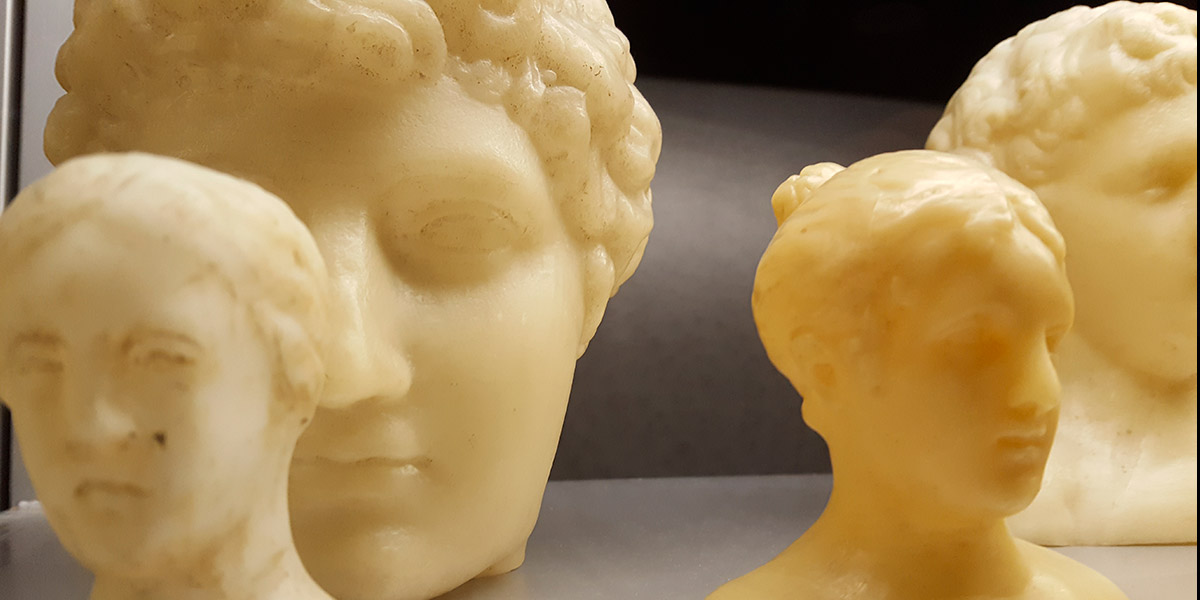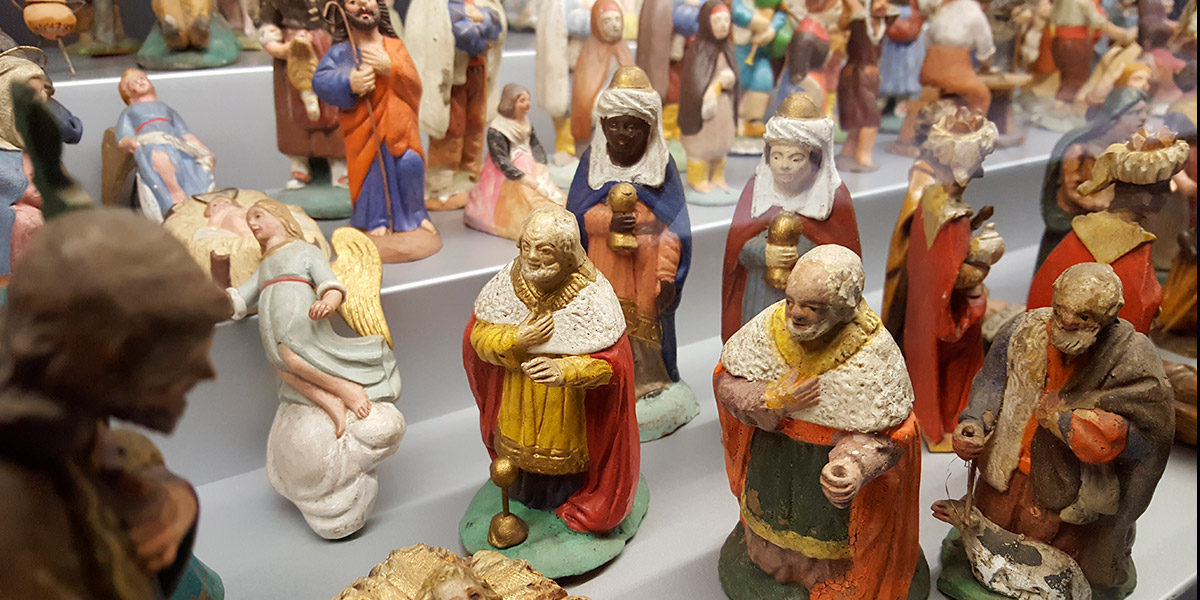Peoples show their own interpretation of the hereafter through religiosity in the form of beliefs, sacred stories and rites. Without spiritual feeling, they would not feel fulfilled in their lives as a whole and in the cosmos. Religion is also the result of multiple influences – some geographical ones and others related to human activities – which shape its character. For example, the establishment of monasteries as enterprises for religious and economic transformation, as against lay feudal power. In Ripollès, the influence of mountains, rivers and chasms, fear of storms and droughts and stories of witches explain both the construction of “comunidors” (small open constructions for prayer to ward off storms) and the devotion for many of the saints venerated in the county. The Christianisation of the land relief can be localised in the sanctuaries of Montgrony and Núria, with symbols which, going beyond the limits of reference, we find scattered all over Catalonia. The same was historically true for the Ripoll monastery and that at Sant Joan de les Abadesses, or legends like that of Count Arnau.
Popular beliefs cases
Ex-votos are proofs of fidelity to a promise made to a saint, the Virgin Mary or Christ at a time of great danger. Faithfulness to promises was highly valued in the cosmic vision of the people. For this reason, telling the story of the event that led to the request provided the strongest proof, transmitting to future generations knowledge of the intervention of the divine protector.
Painted ex-votos, also called votive offerings, provide real windows on local life, clothing, constructions, furniture, colours and landscapes. They speak of daily life interrupted by violence, disease or danger. The image of the Virgin Mary surrounded by clouds – sometimes with traditional clothing of the time – or a saint, brought a lost equilibrium back to those affected.
Festivities and course of the year case
The course of the year shows the continuity of the festivals defining the group. The old symbolisms were inserted into the canonical development of Christianity, making it impossible to discern their origins. The Christmas cycle is particularly susceptible to the memory of old rituals linking the family with the entire lineage, from its remote origins down to new children. The home became the point of communication through the figure of the tió or festive log, bearer of gifts and offerings; the lighting of the way from the hereafter that had to be covered by the Three Kings, or the reproduction of the ideal landscape, shown in the home-made crib.
At Easter, the struggle of spring with the inertia of winter, of good and evil, of life and death, was shown in a reiteration of the ancient festivals that marked the end of the winter period. These are ancient symbols, reinforced by Christianity with the light of the Resurrection. The decorated palm leaves, bouquets and specially grown plants that decorated the Maundy Thursday monument brought the fruits and promises of life. The austere representation of the passion of Christ, the processions, the fasting are the preparation for the outburst of joy of the traditional Easter singers. With the coming of spring, gatherings at sanctuaries and hermitages intensified, with the singing of litanies, the blessing of the boundaries and the distribution of charity in the form of bread, wine and other community food. It was also the time for dances to reaffirm identity.
Núria, the sanctuary which goes beyond county level, interprets the annual cycle of the most important economic activity: stock-rearing. In Ripollès, the key dates in the life of shepherds were marked and also expressed in the different fairs or blessings. There was also the addition new festivals, such as sheep-shearing, and the remembrance of traditional wedding celebrations.




